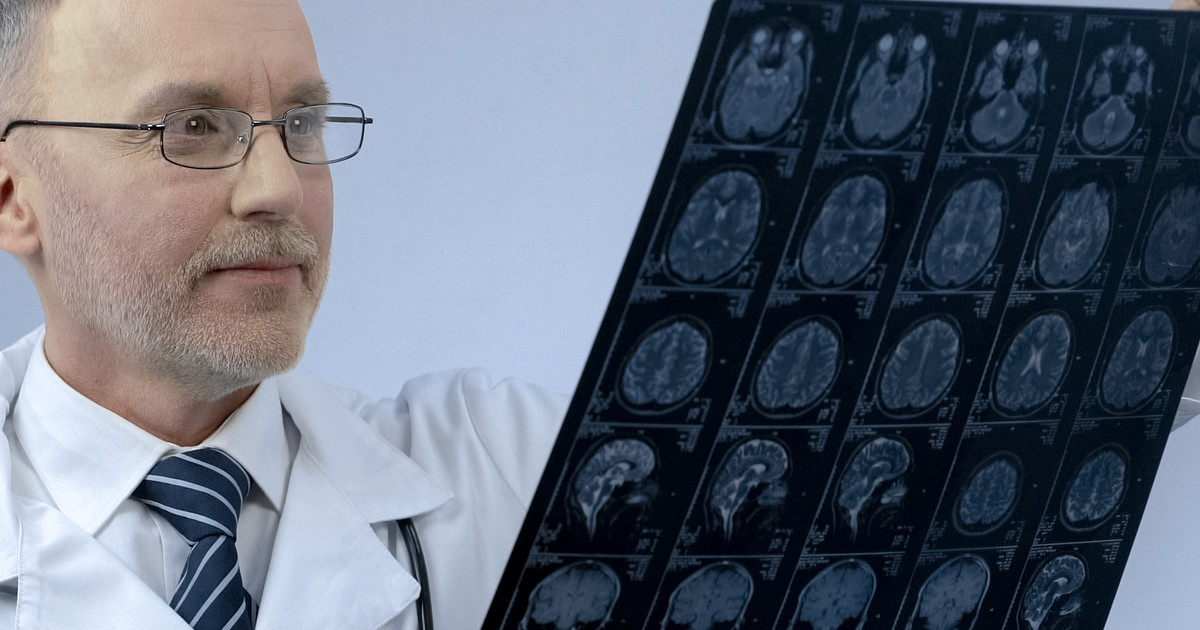Overview Of The Major Types Of Dementia
Dementia is a term used to describe when the loss of certain behavioral abilities, remembering, thinking, and reasoning causes interference in an individual's daily activities and life. Dementia develops when neurons in the brain become non-functional, lose the ability to communicate with other cells in the brain, and die. Individuals may experience issues with several cognitive functions when they develop dementia. Examples include language skills, ability to focus, and memory. Dementia patients may also experience personality changes and difficulty controlling their emotions. The severity can range from mild cognitive impairment and occasional forgetfulness to severe stages where they are entirely dependent on others.
Unfortunately, there is no known cure for dementia. Thus, dementia treatment focuses on symptom management and preventing cognitive decline. Many patients will take medication for Alzheimer's disease. Some individuals have seen success with vitamin supplements for dementia as well. Brain training for dementia is another common treatment. Of course, it is vital to know the types of dementia to obtain the best treatment for it.
Alzheimer's Disease

The most common form of dementia is Alzheimer's disease. It develops when clumps of certain proteins build up in the junctions in between the nerve cells. These proteins are called tangles and plaques. Alzheimer's disease patients will also deal with a decrease in neurotransmitters, which are responsible for passing signals between the cells. Symptoms that this condition is interfering with a patient's life include losing items around the house, forgetting names of loved ones, and being unable to remember recent events and conversations. Others are getting lost on a familiar route or in a familiar place, forgetting significant dates, and not remembering to attend appointments.
Patients may also have reduced visuospatial skills, repeat themselves often, struggle to follow a conversation, cannot make decisions, and cannot carry out a sequence of tasks. In addition, they may be unable to solve problems, lose track of the day, experience mood changes, and lose interest in hobbies and activities that they once enjoyed. Every case is different, but most patients have a life expectancy of between eight and ten years following the onset of their first symptoms.
Vascular Dementia

The second most common form of dementia is vascular dementia. Brain cells require a consistent supply of oxygen and nutrients from the blood to function and be healthy. The vascular system is a network of blood vessels that supplies the brain tissues with blood. When these blood vessels become obstructed or damaged, blood cannot get to the cells in the brain. Without a consistent blood supply, the brain cells begin to die.
An ischemic or hemorrhagic stroke can cause patients to develop a type of vascular dementia called post-stroke dementia. Individuals can develop forms of vascular dementia called single-infarct and multi-infarct dementia if they experience a series of smaller strokes rather than a single severe one. When the smallest blood vessels in the brain become twisted and stiff to the degree that they restrict blood flow, it is referred to as small vessel disease. Individuals affected by small vessel disease in their brain may develop the most common type of vascular dementia: subcortical dementia.
Lewy Body Dementia

Between ten and fifteen percent of all dementia cases are Lewy body dementia. Tiny deposits of alpha-synuclein, a protein that develops in the brain's nerve cells, are known as Lewy bodies. The precise mechanism linking the development of Lewy bodies to dementia is not clear. However, it is thought to be associated with low acetylcholine and dopamine. Another theory is connection loss between nerve cells. Lewy bodies developing in the base of the brain cause Parkinson's disease. The cognitive symptoms of Lewy body dementia are the result of Lewy bodies developing in the brain's outer layers.
Lewy body dementia patients may experience changes in their attention and alertness. Visual hallucinations may accompany these alterations. Lewy body dementia patients may experience poor regulation of the autonomic nervous system that controls pulse, sweating, blood pressure, and digestive processes. Other common symptoms of Lewy body dementia are visuospatial problems, sleep difficulties, disorganized speech, confusion, and dizziness.
Mixed Dementia

Mixed dementia is only used in cases where a patient exhibits clear clinical features of more than one cognitive disease that contribute to their dementia symptoms. One in every ten dementia patients will have more than one type of the disease. Mixed dementia is more prevalent among older individuals, such as those who are over seventy-five years old. In most cases of mixed dementia, the affected individual will deal with more symptoms of one type of dementia than the others.
The form of dementia that produces more symptoms is referred to as the predominant form of dementia. The two most common variations of mixed dementia are Alzheimer's disease with vascular dementia and Alzheimer's disease with Lewy body disease. Only a few medications, called cholinesterase inhibitors, have shown efficacy in the treatment of mixed dementia. Medications that prevent vascular problems and strokes may also be used to treat mixed dementia.
Frontotemporal Dementia

The lobes of the brain behind the forehead are the frontal lobes and temporal lobes. When they become affected by the damage that causes dementia, it is called frontotemporal dementia. The left temporal lobe is responsible for conveying the meanings of words and the names of objects. The right temporal lobe is responsible for the recognition of familiar objects and faces. When the cells in the frontal or temporal lobes die off, the connecting pathways between these lobes of the brain become altered.
As the damage accumulates, the frontal and temporal lobes begin to shrink in size, causing these lobes to lose function. This mechanism is what results in the symptoms of frontotemporal dementia, including changes in personality, changes in behavior, and difficulties with language. Frontotemporal dementia is the most prevalent form of dementia that develops in individuals between forty-five and sixty-five years old. This type of dementia in younger individuals tends to be the mildest form of the disease. It does not present with a short life expectancy like others.
Parkinson's Disease Dementia

Parkinson's disease is a progressive condition that affects an individual's nervous system and their movements. Symptoms are gradual. Some patients with Parkinson's disease first deal with a slight tremor in their hands. Other symptoms include muscle stiffness, slow movements, speech issues, and the loss of automatic movements. Many individuals with Parkinson's disease will develop Parkinson's disease dementia after a year or two of dealing with Parkinson's disease.
This form of dementia, like the others, involves a significant decline in reasoning and thinking. Patients will struggle to pay attention, make decisions and judgments, and plan steps to completing various tasks. Memory issues are also common. Many individuals with Parkinson's disease dementia will also develop Lewy bodies in their brain. As mentioned, these are deposits of a protein called alpha-synuclein. This is why many experts believe Parkinson's disease dementia and Lewy body dementia are closely connected.
Normal Pressure Hydrocephalus

Normal pressure hydrocephalus is a brain condition. It involves excessive amounts of cerebrospinal fluid building up in the ventricles of an individual's brain. Although there is this excessive amount of fluid, patients will still have normal pressure readings after a lumbar puncture. Unfortunately, as the fluid builds in the ventricles, they begin to enlarge. This will eventually damage surrounding tissues in the brain. The result of this are symptoms that resemble dementia, including reasoning and thinking problems and difficulty walking.
These symptoms are often why normal pressure hydrocephalus is often misdiagnosed as Alzheimer's disease. Other individuals with this condition may be misdiagnosed with Parkinson's disease. Thankfully, however, normal pressure hydrocephalus is treatable. Many patients see some improvement with shunt surgery. This involves the placement of a shunt from their brain to their abdomen to drain the excess cerebrospinal fluid.
Creutzfeldt-Jakob Disease

Creutzfeldt-Jakob disease is a prion disease. Prions, which are misshapen proteins, trigger degenerative brain disorders. Thus, this condition causes many symptoms of dementia. This includes memory loss, thinking impairments, loss of coordination, problems swallowing, changes in personality, and difficulty speaking. These symptoms are quite similar to those found in other forms of dementia, including Alzheimer's disease. The major difference is that dementia in Creutzfeldt-Jakob disease progresses much faster than in other forms.
Some tests, such as brain magnetic resonance imaging and electroencephalograms, help diagnose this condition. However, the rapid progression of the symptoms is often the best warning sign and diagnostic tool. Unfortunately, there is no effective way to treat Creutzfeldt-Jakob disease. Doctors typically focus on relieving pain and other symptoms as much as possible to keep patients comfortable.
Huntington's Disease

Huntington's disease is another progressive condition that affects an individual's brain. It is also an inherited condition, which means individuals will develop it due to a genetic mutation. In the case of Huntington's disease, it is a defective gene on chromosome 4. Patients only need one copy of the defective gene to develop this condition. Huntington's disease has a wide range of effects on an individual's body and its function. Many patients deal with movement disorders and see symptoms such as impaired balance and gait, involuntary jerking movements, as well as rigid muscles or muscle contracture.
Huntington's disease patients often deal with psychiatric issues, including personality changes, irritability, apathy, and a lack of energy. This condition also causes symptoms of dementia. Specifically, Huntington's disease causes memory problems, a decline in thinking and reasoning, concentration issues, and similar symptoms. Unfortunately, no treatment can change the ultimate progression of Huntington's disease, though some medications can help patients manage their symptoms. Examples include medication to control chorea, such as clonazepam and tetrabenazine. Speech therapy, physical therapy, and psychotherapy are also helpful.
Wernicke-Korsakoff Syndrome

Wernicke-Korsakoff syndrome is another brain disorder. It is the result of a thiamine (vitamin B1) deficiency. However, it is worth understanding that it is two different conditions that appear at the same time: Wernicke's disease and Korsakoff syndrome. Most individuals deal with the symptoms of Wernicke's disease first. They include a drooping upper eyelid, double vision, and ataxia, which is the loss of muscle coordination. Patients may also deal with confusion that leads to violent behavior. Korsakoff syndrome is where symptoms of dementia begin to appear. Patients will start to have problems with their memory, including gaps in their long-term memory, issues learning new information, as well as being unable to remember recent events. Individuals may end up making up information that they cannot remember. Hallucinations are another potential symptom.
Thankfully, Wernicke-Korsakoff syndrome is treatable. Patients who receive prompt treatment can delay the progression of their condition or even stop it. Sometimes, treatment can reverse certain abnormalities in their brain. Most patients need to be hospitalized at the beginning of their treatment. This is when they will receive intravenous vitamin B1. After hospitalization, patients often need to take oral vitamin B1 supplements. They will likely need to have a special diet that is designed to maintain healthy levels of vitamin B1.
